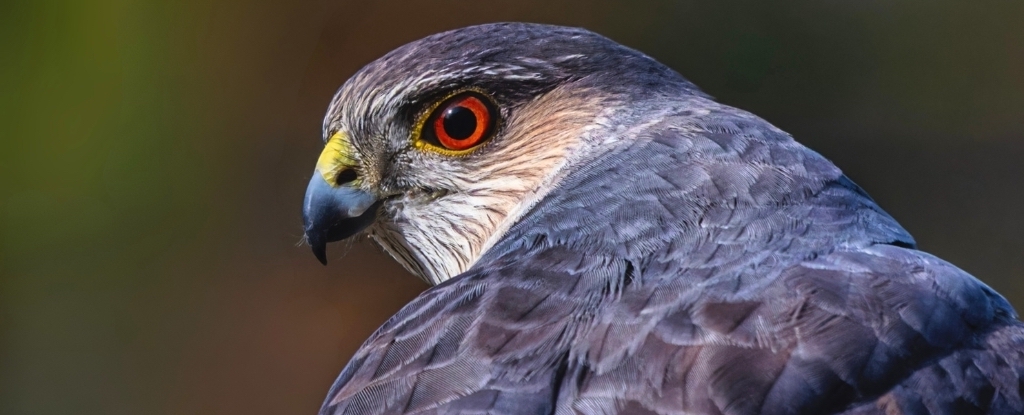
Title: A Hawk in Our Midst: How One Bird Mastered Urban Dynamics to Hunt with Accuracy
In a serene suburb of New Jersey, amid the hum of morning traffic and synchronized red signals, a youthful predator soared with strategies resembling those of a military planner rather than a typical bird of prey. A juvenile Cooper’s hawk has left researchers amazed by leveraging pedestrian-controlled traffic signals—particularly, prolonged red lights activated by audio cues for visually impaired pedestrians—to execute precise attacks on unwary songbirds.
This remarkable behavior, recorded by Vladimir Dinets from the University of Tennessee, is the most sophisticated known instance of a wild avian species adapting to and making the most of urban traffic systems. The hawk turned an ordinary suburban crossroads in West Orange, New Jersey, into a city hunting blind, presenting scientists with a clear illustration of how wildlife can interpret and utilize artificial urban settings.
The Sound of Opportunity
The essence of the hawk’s strategy was rooted in deciphering audio pedestrian signals. At a certain intersection in West Orange, red lights normally lasted about 30 seconds. However, when pedestrians—particularly those with visual impairments—activated a specific button, a speaker provided an audio signal that extended the red light to 90 seconds. This additional duration permitted longer lines of cars that concealed portions of the roadway and sidewalks, granting the hawk essential cover for its stealthy, low-flying strikes.
Dinets observed that the hawk’s actions were not coincidental. Over 18 days of monitoring, the hawk was present near house #11 each time the pedestrian audio signals activated, well ahead of when traffic began to congest. These instances occurred solely during the 3.75% of light cycles that involved pedestrian activation, rendering the likelihood of random occurrence statistically improbable: merely 0.0053%, or 1 in 18,850.
Military-Grade Precision
The young hawk didn’t just show up at the opportune moment—it executed its attacks with remarkable precision. Once vehicle queues built up sufficiently near house #8, the hawk would dive down from its perch, navigating just under one meter above the sidewalk in a 65-meter sprint past vehicles, trees, and buildings. It made a sharp 90-degree turn upon reaching house #1 and swooped in between parked cars to capture its prey—typically house sparrows, starlings, or mourning doves—near house #2.
This action was not only swift but also spatially intricate. It necessitated the hawk to:
– Recall an exact spatial arrangement of homes and tree cover,
– Anticipate where prey would be based on auditory—not visual—indicators,
– Time its motions in relation to traffic cycle duration, and
– Carry out low-altitude flight within a narrow gap between human-made structures.
Mapping Intelligence
Why does this matter significantly? It transcends mere clever avian behavior—it reflects cognitive mapping and forecasting. Dinets notes that the hawk had to link an auditory stimulus (the pedestrian signal) with a delayed but spatially distant event (the buildup of traffic), and then align both with the timing of prey emergence in a hidden location.
In essence, the hawk exhibited:
– Long-term spatial recall
– Predictive foresight
– The capability to identify and interpret novel human-generated auditory signals
– An awareness of cascading effects within a system (sound signals → traffic buildup → concealment for hunting)
This positions the hawk’s actions as an exemplary demonstration of what scientists refer to as tactical deception or strategic foraging—approaches that require deliberate planning rather than mere instinct or basic reinforcement learning.
Learning More Than Survival
What enriches this discovery even further is the timeline of the hawk’s development. Cooper’s hawks infrequently nest in the area and are primarily winter visitors. The hawk in focus was an immature individual and likely freshly arrived from a rural environment. Yet it adjusted to complex urban circumstances within a matter of weeks—a striking contrast to the generations-long evolutionary adaptations typical of scientific studies.
Even more fascinating, Dinets recorded what was believed to be the same hawk returning the subsequent winter—now an adult—and conducting identical timed strikes. This showcased memory retention, skill enhancement, and possibly even an understanding that specific human behaviors, such as pedestrian crossings, could be manipulated for hunting.
However, this ingenious tactic bore a fragility. In mid-2023, the pedestrian audio system ceased operating, and residents who fed the birds departed. The sources of food and auditory cues vanished—and with them, the hawk also disappeared. The strategy proved effective but was hyper-localized, illustrating how even intelligent adaptations can be disrupted by changes in urban infrastructure.
More Than Pavlov
It’s easy to frame this in terms of conditioning—we observe a clear cause and effect, after all. But Dinets cautions against such reductionism. Conditioning suggests reflexive learning: see-a-cue, take-an-action. This hawk operated as a cognitive agent, not merely a responsive one.
It had to interpret sound as a predictor of intricate peripheral patterns.